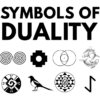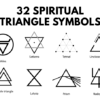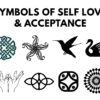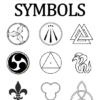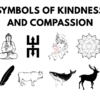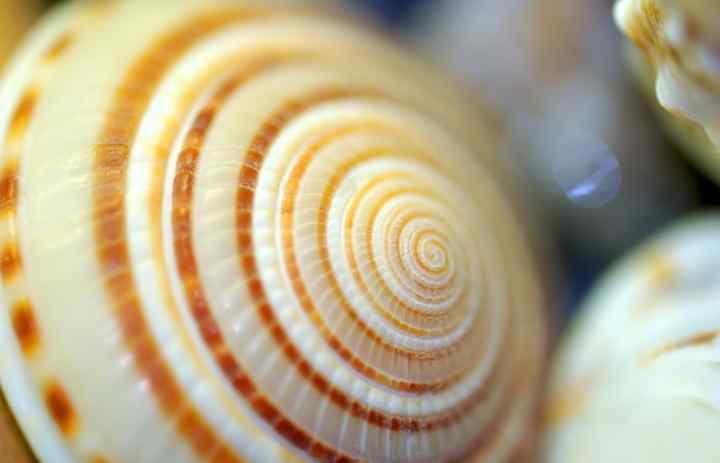
The spiral is an ancient and mysterious symbol. From the tiniest snail’s shell to the most magnificent faraway galaxies, the shape of a spiral is intrinsic to the makeup of the universe. Our own DNA is shaped like a spiral, as are the synapses in our brains. It’s clear that spirals play a significant role in our lives, and ancient people knew this just as much as we do in modern times.
In this article, let’s explore 22 powerful spiral symbols and delve into the profound meanings that they represent.
22 Powerful Spiral Symbols & Their Deeper Meaning
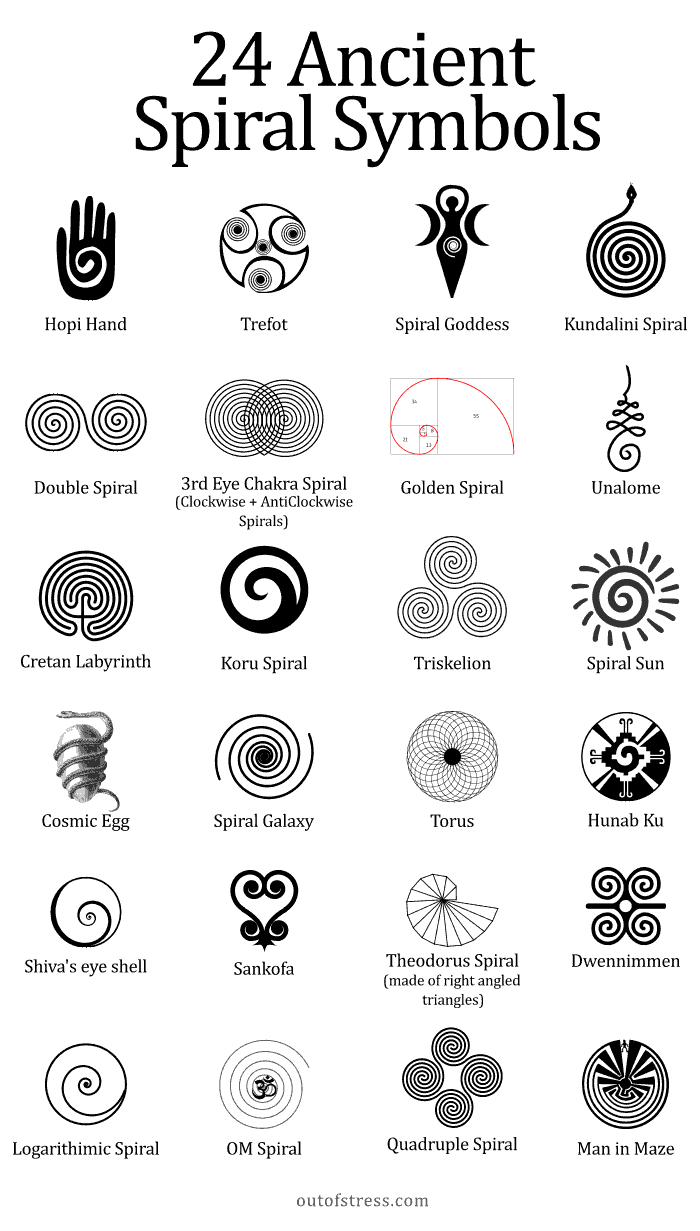
1. Clockwise Spiral
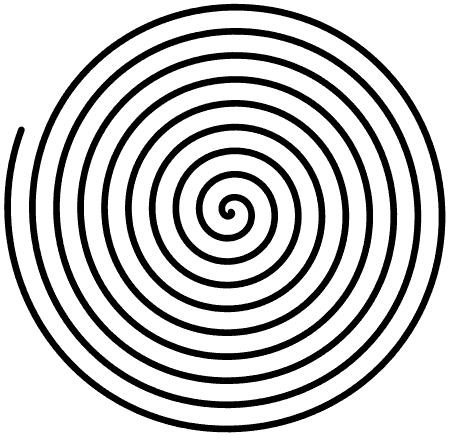
A spiral that spins clockwise (from the inside-out) represents growth, expansion, evolution, harmony and cosmic energy. It can also represent the inner (spiritual) and outer (physical) worlds and the connection between the two.
The center of the spiral is often associated with the Source, God, or One Consciousness, out of which everything emerges. The spiral emerging from the center and expanding outwardly in all directions in an everlasting manner represents creation, cosmic energy, and infinite possibilities. It also represents the cyclic nature of the universe.
It is to be noted that when you trace the spiral from the outside-in (starting from the outside and moving toward the center), this counterclockwise motion represents an opposing (inward) energy or force. This inward energy balances the outward energy, which is the basis of all existence. This counterclockwise motion represents everything going back to the source only to get created again (or to be reborn again). The inward motion also represents connecting with your inner self or returning back to your roots.
As everything emerges from a single center, the spiral is also a symbol of unity, oneness, and interconnectedness. It suggests that everything in the universe is interconnected and that you are part of a larger whole. The spiral also represents the constantly changing and evolving nature of the universe.
Many cultures also associate the clockwise spiral with the everlasting and infinite energy of the Sun that is responsible for all life on earth.
2. Counterclockwise Spiral
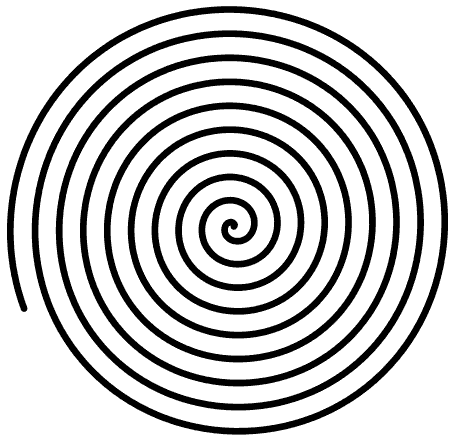
A counterclockwise spiral is a spiral that spins counterclockwise from the inside-out or when starting from the center and moving outward.
It represents the process of destruction or letting go which is essential to the process of creation. It is an opposing force that generates the balance required for the cycle of existence to continue infinitely. It has a deeper connection to the moon than the sun, night than the day, and a stronger connotation with winter than summer. Remember, that this is not negative in any way. The night might seem negative but it is only by resting during the night that you can regain the powers to function during the day. Thus the night indicates merging with the source/consciousness only to be reborn again.
Also, as discussed earlier, depending on where you start (inside or outside), any spiral can spin clockwise or anticlockwise and they pretty much represent the same symbolism.
3. Triskele
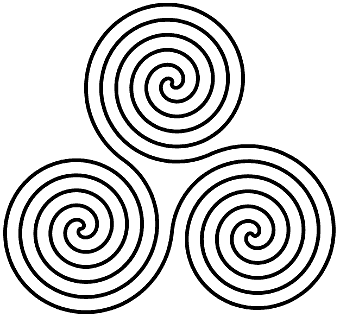
The Triskele is a Celtic symbol that was popularized when Christianity spread to the UK and Ireland. A combination of three conjoined spirals, it represented the Christian holy trinity of father, son, and holy ghost. The spirals represent the endless learning, opportunity, and acceptance one may feel when they are confident in their faith and practicing Christian ethics.
However, the Triskele was merely adopted by the Christians. It is much older than Christianity itself, going back thousands of years to ancient Greece. As one of the oldest spiritual symbols in the world, the Triskele represents the power of three in all its forms. It can indicate the human aspects of mental, physical, and spiritual abundance, the cycle of birth, life, and death, and even the physical elements of land, sea, and sky.
4. Trefot
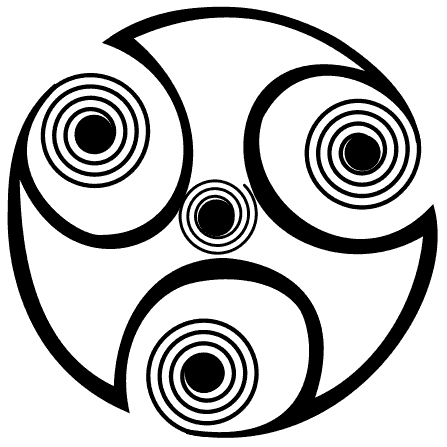
With three spiral arms extending from a single point, the Trefot strongly resembles the Triskele. The Trefot also represents the power of three, but this ancient Norse symbol is distinct in its meaning. Vikings believed in three heavens — Asgard, Alfheim, and Vanaheim. The three heavens are represented by the Trefot, as are the three Hells of Niflheim, Muspelheim, and Jotunheim.
The Trefot is also a basic symbol of trifunctionality for the Vikings, who numbered their life cycle and the seasonal cycles by three. They celebrated Ostara, Midsummer, and Yuletide, three yearly festivals that represent these cycles. They held body, mind, and spirit to sacred status, assigning different times of the day to honor each aspect of the human experience. The body was to be exercised in the morning, the mind at midday, and the spirit in the evening with prayer and ritual practice. The Trefot is a reminder that all aspects are important, and we must nourish each one with care and dignity.
5. Hopi Hand
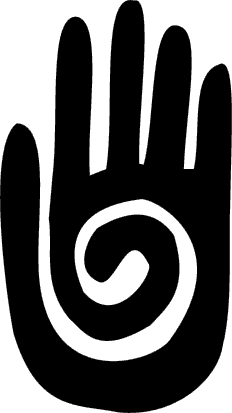
The Hopi hand is a symbol of the Hopi tribe native to Arizona. Featuring a spiral within the palm of a hand, the drawing can be found in caves, etched onto walls, and woven into various fabrics. It is also known as the “Shaman’s Hand” or “Healing Hand,” which makes sense considering its magical applications.
Hopi tribes people drew the hand onto warriors before they went into battle to prevent injuries and promote fast healing from wounds while at war. It was a symbol of great strength and long life and was even drawn onto shields and horses. Anyone on a journey could benefit from the powers of the hand, as it would attract protection from the highest elements in existence. It was also a symbol of therapy which could cleanse a person spiritually and mentally of exhaustion, fatigue, stress, and sickness.
6. Nautilus Shell
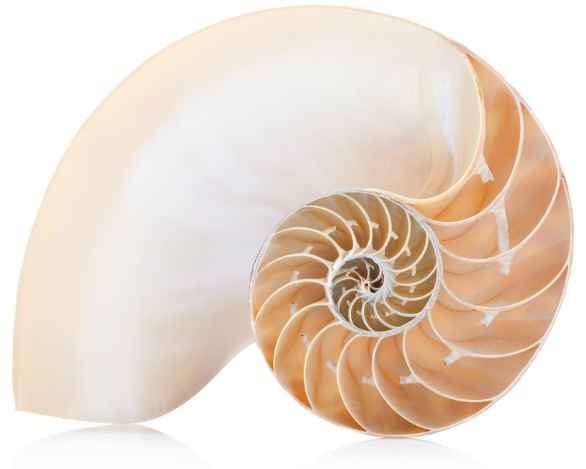
The Nautilus shell is nature’s perfect logarithmic spiral. Also known as a “growth spiral,” the logarithmic spiral is unique. Mathematically, its radius expands exponentially to its center point in a geometric progression. Unlike a regular spiral, the space between the logarithmic spiral’s arm grows larger with each loop.
As found on the Nautilus shell, this spiral represents perfect progression through the world. The Nautilus itself is born small and has a tiny shell. As it grows, its shell grows wider to accommodate it. This reflects ideal human growth—as our knowledge and abilities expand, so must our consciousness. That way, we remain responsible and conscientious in our actions. The Nautilus is also a symbol of beauty and perfection. It has retained the same form for millions of years, forever at the peak of its evolution.
It is interesting to note that logarithmic spirals are found everywhere in nature including sunflower seeds, galaxy structures, hurricane cloud formations and the growth patterns of plants.
7. Golden Spiral (Fibonacci spiral)
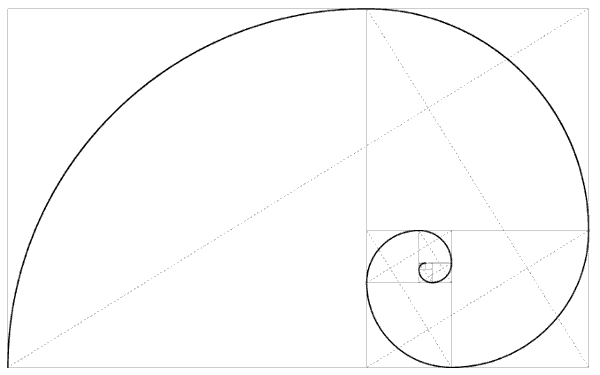
The golden spiral is a mathematical concept with a deeper spiritual meaning. It is a logarithmic spiral whose growth rate is determined by the Golden Ratio (also known as Phi whose value equates 1.618). The Golden Spiral is found throughout nature, both in microscopic organisms and larger-than-life galaxy spirals. Many things in math, science, and the earth around us are built with this symbol.
The golden spiral is similar to the Fibonacci spiral (as shown in the image below) which is constructed using Fibonacci sequence of numbers. In this sequence, each number is the sum of the previous two numbers. The sequence is as follows – 0, 1, 1, 2, 3, 5, 8, 13, 21, 34, 55, and so on.
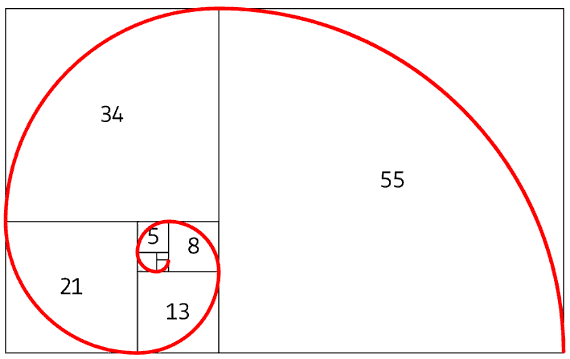
The Golden Spiral represents life, creation, balance, harmony, and prosperity. It embodies the never-ending cycle of expansion and the relentless rate of universal growth. It is grounded in mathematics, but found in so many natural places that many people take it as a sign of divine order. For them, the Golden Spiral is proof the universe was created via intelligent design. Some interpret the Golden Spiral as proof that God exists.
Also, another interesting property of Golden spirals is its self-similarity, meaning that the spiral’s shape repeats infinitely when magnified. This phenomenon symbolizes the ancient concept of “as above, so below,” which suggests that the microcosm and the macrocosm mirror each other. In other words, the patterns and structures observed in the small-scale world are reflected in the larger scale and vice versa.
This is also symbolic of the fact that everything in this universe is connected and everything emerges from and merges back into a single source.
8. Man in the Maze
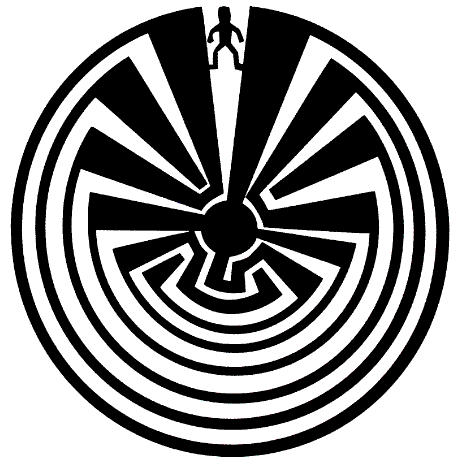
Also known as I’itoi, the Man in the Maze is a sacred symbol for the Tohono O’odham tribe native to the southwestern US. Featuring a person standing at the head of a spiral design, the Man in the Maze is an interpretation of the life cycle. The man represents birth, the maze life, and the center is the ultimate source of death and rebirth.
The maze is a winding path we all walk through in life. We make many choices along this path that take us through different parts of the maze, but we all reach the center in the end. The Man in the Maze travels towards the sun-God as he walks the path. At the center, he has the opportunity to look back on all his choices and achievements before entering another life cycle.
9. Koru
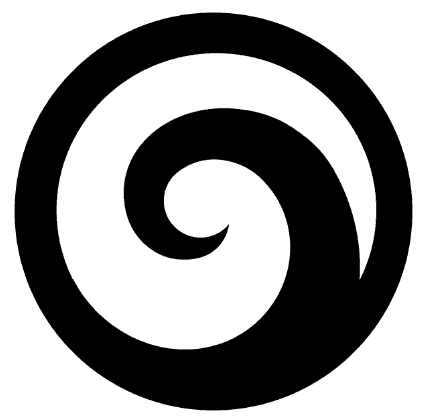
The Koru is an essential symbol for the Māori people of New Zealand. A simple spiral, the Koru depicts an unfurling sprout of the Silver Fern—a rare plant found only in this region of the world. It represents the beginning of new life, creation, growth, strength, and peace.

The Koru’s spiral shape suggests the perpetual motion of life. We are always seeking new experiences. We change with each new adventure, becoming stronger as we learn and grow. The closing of the inner spiral symbolizes that despite this change, we are strongly rooted in community. We tend to come back to the same places seeking the familiar. Eventually, we all return to the soil.
10. Spiral Goddess
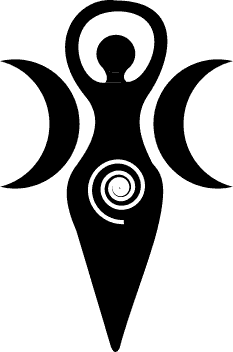
The spiral goddess is an ancient symbol that represents feminine power, life cycles, fertility, manifestation, and creation. It usually depicts a woman’s body with her hands raised and with a spiral in her belly. The spiral in the belly represents the divine womb which acts as a vortex through which the creation of life happens in the universe.
The spiral also represents the sacral chakra, the energy center in the body associated with creativity, passion, and sensuality. When this chakra is activated, it can unleash tremendous creative potential that can bring forth new beginnings or facilitate the removal of unwanted energies. Thus, the Spiral Goddess serves as a powerful reminder of the creative force and potential within us to manifest our desires and dreams.
11. Cretan Labyrinth
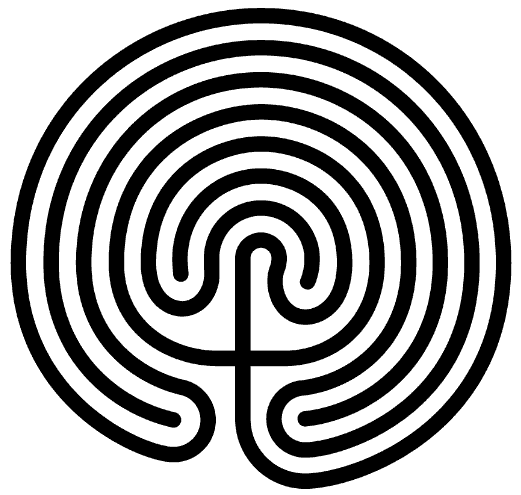
One of the most famous labyrinths in the world came from the small Isle of Crete in ancient Greece. It is said that King Minos ordered the Cretan Labyrinth to be constructed as a prison for the monstrous Minotaur, a creature with a man’s body and a bull’s head. The Minotaur was lost and trapped in the labyrinth, feeding on human sacrifices sent by King Minos until the hero Theseus arrived and killed it.
As a symbol, the Cretan Labyrinth reflects the idea of overcoming our fears and conquering our darkest selves. The labyrinth is a prison in which we house our darkest desires. In building the prison, we show weakness and fear of confrontation like Minos. But just like the Minotaur, our dark selves cannot be ignored forever. They will keep consuming until we confront them like the hero Theseus. To a lesser extent, the labyrinth was also a powerful feminine symbol illustrating the strength and power of women against masculine oppression.
12. Kundalini Serpent
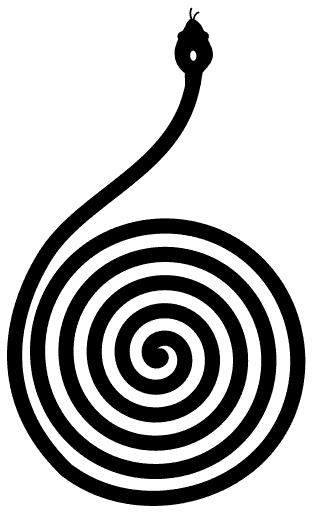
Translated from Sanskrit as “coil” or “spiral,” the Kundalini Serpent represents the vast reserves of energy within all of us. This energy-serpent lies dormant, coiled in three loops at the base of our spine with its tail resting in its own jaws. As we dive deep into Kundalini spiritual practices like yoga and meditation, we begin to have a series of spiritual awakenings that eventually lead us to enlightenment.
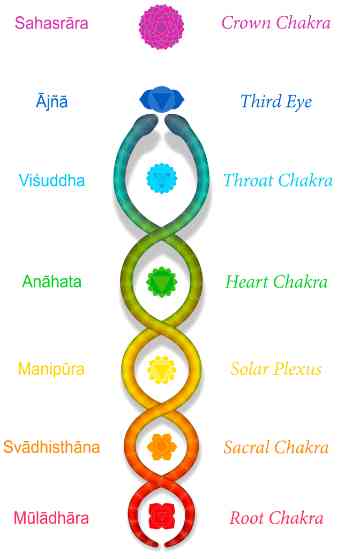
As we awaken, this serpent wakes up as well. It begins to shift our worldview and perceptions, causing shockwaves of powerful energy to travel up our chakras. The serpent itself is a powerful symbol of growth and change. It helps us shed the skin of our previous attachments, moving on to new ideals and values. As we experience “Kundalini Shakti,” or “serpent power,” we find ourselves with increased capabilities and improved quality of life.
Kundalini energy is also considered feminine in nature and when awakened (via Yoga, self-reflection, and other meditative practices), it travels via the spine to the top of the head where it unites with masculine energy that comes down from above. This mingling of masculine and feminine energies is the basis of spiritual awakening.
13. Newgrange Motifs
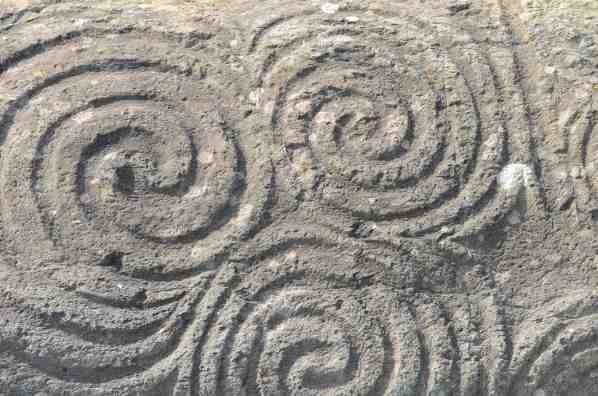
Newgrange is a mysterious Irish monument dating back to the stone age. Archaeologists believe that it was mainly a tomb. However, there is mounting evidence that it was used in solstice festivals to celebrate the passing of the seasons and welcome times of bounty. The Newgrange Motifs are a series of etchings drawn onto a stone at the entrance of the Newgrange monument.
One of the most prominent motifs is the triple spiral, carved intricately with great effort and precision. The three arms of the spiral can represent many important threes—birth, life, and death; morning, noon, and night; or even summer, winter, and spring. The spiral shapes themselves represent the passage of time and our own journey through life and seasonal cycles. It is fitting that the monument at Newgrange was used as a tomb, as death is an important step in this journey of life.
An amazing thing about this Neolithic monument is that in the year 1972, it was found that there was a small hole in the roof over the entranceway from which light enters and falls on the triple spiral pattern located more than 18 meters away from the opening (from where the light enters). What makes this occurrence truly magical is that it only happens once a year, during the winter solstice.
14. Snail Shell
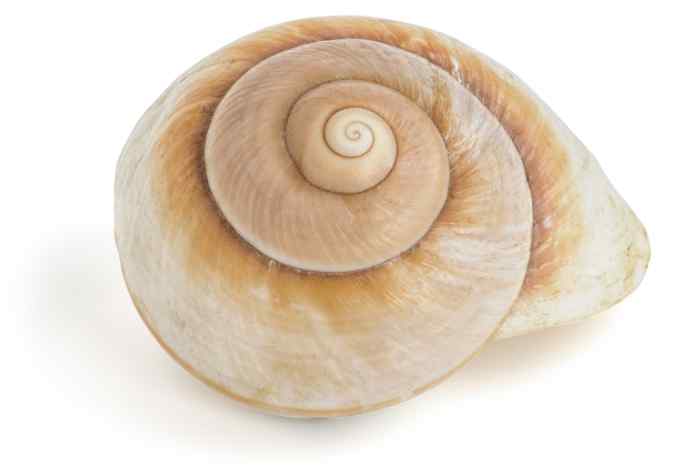
The snail shell is a commonplace symbol found in gardens across the world. It is a special spiral whose shape is based on the Golden Ratio, a mathematical equation describing the relationship between two objects in a visually perfect representation. Things that are based on this ratio are perfectly-proportioned and beautiful, just like the snail’s shell.
The ancient Mayans based their glyph for the number zero on the shell, while the Egyptians interpreted the snail shell as a symbol of new beginnings and rebirth. A creature of extreme independence, a snail lives its whole life within the shell. As a permanent yet adaptable home, the shell represents sustainability and confidence in one’s own abilities. The snail inside it is a slow-moving creature that plods forever onward, symbolizing the constant movement and progression of life.
15. Double Spiral
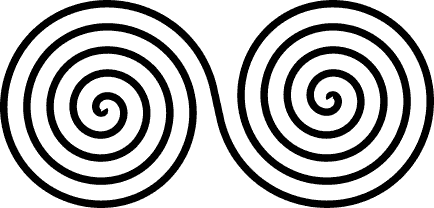
The double spiral represents the dual nature of the universe – that every phenomenon in this universe is polarized by its exact opposite. It also shows the interconnectedness between these two opposing forces of nature. Like the Yin and the Yang, Shiva and Shakti, Masculine and Feminine, Day and Night, Creation and Destruction, Manifest and the Unmanifest, so on and so forth.
If you start from the center of one spiral and move outward you will eventually end up in the center of the other spiral. This indicates the recurring cycle of creation and destruction and the fact that everything emerges from the source and merges back with the source.
The double spirals are also said to represent the 2 equinoxes (the Spring Equinox and the Autumn Equinox), the two hemispheres, the two poles, the continuity between cycles, and all rhythms of nature.
16. Sunflower Head
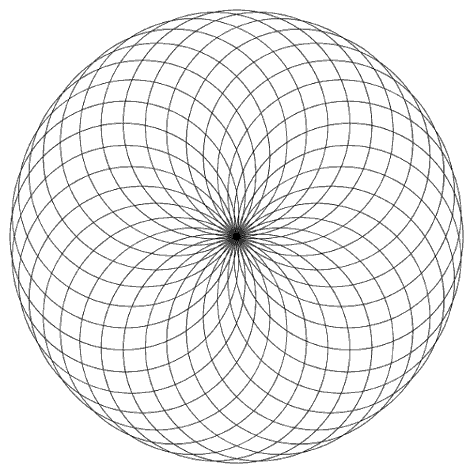
The sunflower head displays a magical and mesmerizing spiral pattern. The head contains two set of spirals emanating from the center that run in opposite directions – one runs clockwise and the other counterclockwise. It has been seen that in most cases, the total number of clockwise and counterclockwise spirals add up to adjacent numbers in the Fibonacci sequence (0, 1, 1, 2, 3, 5, 8, 13, 21, 34, 55, and so on). For instance, if there are 34 spirals running clockwise, there would be either 21 or 55 spirals running counterclockwise.
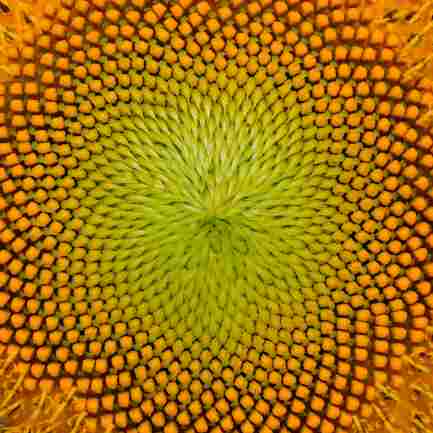
The two opposing spirals of the sunflower that emanate from a single point signify the concept of duality as well as oneness where two seemingly contradicting cycles have a single point of origin. It also represents the balance between the opposites that is the basis of life in the universe.
Also, it has been seen that the arrangement of sunflower seeds in the form of a double spiral is highly effective in maximizing their exposure to sunlight. Thus the spirals on the sunflower also symbolize sustainability, adaptability, coherence, and efficiency.
17. Pinecones

Another popular spiral symbol that is found in nature is that of the pinecone. The scales of the pinecone (that contain the seeds) are arranged in spirals. Like the sunflower, there are two sets of spirals, clockwise and counterclockwise, and counting the number of spirals in each direction often yields two adjacent numbers in the Fibonacci sequence. This is why pinecones are a powerful symbol of balance, harmony, and abundance.
The spiral pattern of the scales on a pine cone is also believed to represent the journey of the soul as it grows and expands through life’s experiences. Also, it has been observed that the spiral shape of pinecones serves a functional purpose in nature, as it helps to condense and strengthen the overall form of the plant, making it more durable and resilient. Thus, the spiral pattern of the scales also represents protection, sustainability, and growth.
18. Cosmic Egg
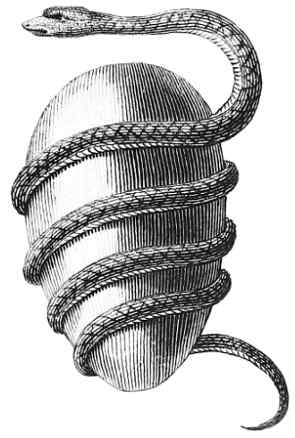
The cosmic egg is an ancient symbol of creation that depicts an egg encircled by a spiraling serpent. The egg is said to represent the universe in its primordial form that carries within it an infinite potential for creation. The snake coiled around the egg represents the cyclic nature of the universe that continues forever without an end. This includes the cycles of creation/destruction, life/death/rebirth/, the three seasons, the sun/moon cycles, so on and so forth.
19. Shiva’s Eye Shell
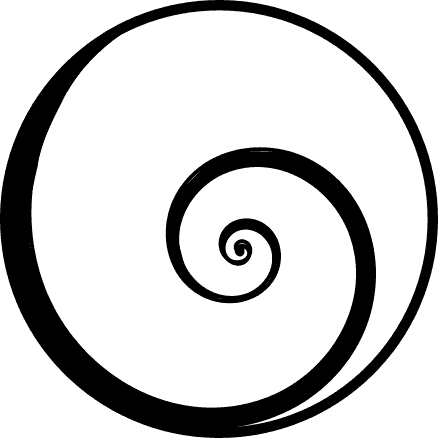
The Shiva’s eye shell comes from a particular type of snail that is found in the coasts of Thailand, India, Madagascar, and New Zealand. The shell is actually a door that covers the opening of the main shell in which the snail lives. It features a beautiful logarithmic spiral (growth spiral) pattern on the inside. This spiral pattern is said to represent Lord Shiva’s third eye or the Third Eye Chakra in general. Thus it symbolizes intuition, awakening, and spiritual ascension.
The shell also symbolizes protection (as it acts as a door), stability, evolution, wisdom, prosperity, and good luck. In fact, there is a long history of the shell being worn as a pendant to ward off the Evil Eye in the Middle Eastern and European countries.
20. Hunab Ku
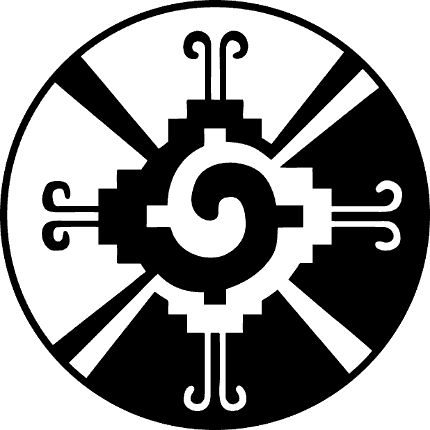
The Hunab Ku also known as ‘the spiral of creation’ is an ancient Mayan symbol that is said to represent the concept of ‘One God’ or ‘Supreme Being’ which is the source of all creation. The center of the Hunab Ku represents the center of the galaxy (or the source) and the two black and white spiral arms represent the two opposing creative forces that originate from the center and expand in all four directions. The interplay between these forces is responsible for all phenomena arising and falling in the universe. The spirals also represent cosmic energy and their meeting at the same center symbolizes the interconnectivity of all things.
21. Spiral Sun
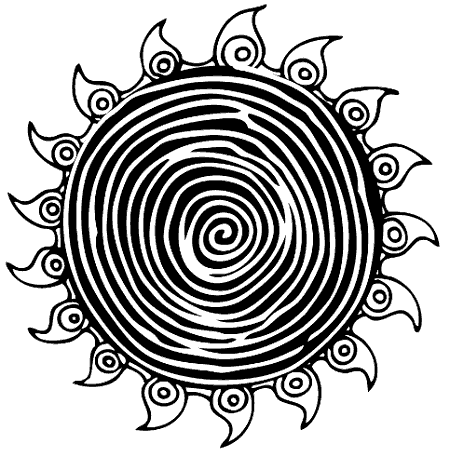
The Spiral Sun is an ancient sun symbol of the Anasazi people (an indigenous Native American tribe). The Anasazi revered the Sun for its powerful healing properties and considered it the first healer or first shaman. The sun in the form of a spiral represents this healing power that is radiated outwardly in all directions and is always available to us to restore balance and harmony to our energy.
22. Adinkrahene
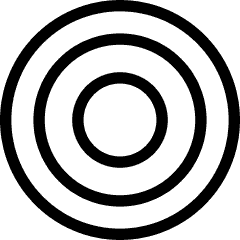
The Adinkrahene is an Adinkra symbol found in western Africa. Literally translated as “Adinkra King,” it is the most important symbol of the Ashanti culture. It is said that the Adinkrahene was the first symbol and served as inspiration for creating all the other Adinkra symbols. It consists of three concentric circles nesting inside each other and represents strength, courage, charisma, and leadership.
As the legend goes, the Adinkrahene was styled after ripples in a pool of water. These ripples may begin small, but they move and manipulate the surface in all directions. The ripples are like a great leader who can create meaningful change without wanton destruction. As the king of the symbols, the Adinkrahene is where all great ideas originate. It is the symbol of those who rule with knowledge, wisdom, and moral integrity.
Conclusion
The spiral is a complex symbol with many different interpretations. Largely beneficial in nature, the spiral is mostly associated with the passage of time, the seasons, and the cycles of life. As a spiral moves ever inward and outward, we too remain on a journey. Humankind is forever passing through planes of physical and spiritual existence, and the spiral helps to ground us. If you want to celebrate progress along this path and hope for the future, bring some of these spiral symbols into your home today.


